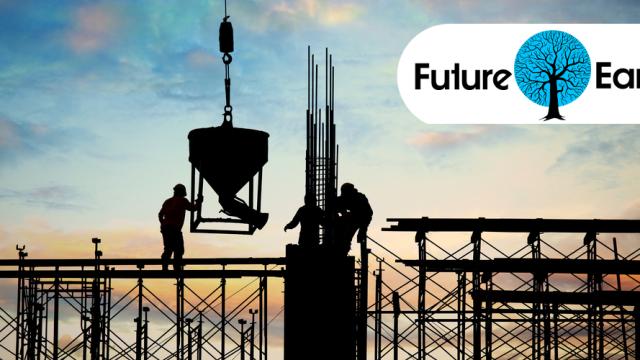The building and construction industry is a massive source of global CO2 emissions — but it could easily reduce its impact with existing technology. At today’s climate talks in Paris, 18 countries and 60 organisations formed a new alliance aimed at doing just that.
Just how widely does the construction and building industry affect emissions? The numbers are massive: “Buildings represent a third of global emissions, and a third of energy and materials consumed worldwide,” said Ibrahim Thaw, Deputy Executive Director of the UN Environment Program, at a press conference in Paris today. “More than half of the world’s population live in cities, and that will rise to 70 per cent by 2050. You can imagine the consequences of that on climate.”
According to the Lima-Paris Action Agenda, existing technology — from solar cells and combined heating and cooling plants, to low-carbon concretes and intelligent cooling systems — could help the building and construction industry save 3.2 gigatonnes of CO2 every year.
“We know that we can build buildings that don’t produce emissions,” said Pierre-André de Chalendar, CEO of Saint Gobain, a major producer of construction materials. “Why doesn’t it happen? It’s because we don’t work together. We need architects, producers, builders… everyone, to work together.”
That’s the idea behind a new alliance, announced earlier today, in which 18 countries from around the world — including the US, France, Germany, Japan, Mexico and Sweden — commit to speeding up their attempts to reduce the emissions produced by the construction and use of buildings. Australia is not among them.
Those countries will also be joined by 60 other organisations, ranging from professional groups for architects to construction industry trade organisations. Those include the International Union of Architects, the Royal Institution of Charted Surveyors, and the European Construction Industry Federation.
The new alliance will try to tackle some broad problems: it will minimise energy demand in buildings, reduce the carbon emissions associated with manufacturing building materials, and demand that cities take a more integrated approach to building design and urban planning. It will also seek to use more local materials, which consume less energy for transport.
In the longer term, the alliance will push to make buildings that contribute to the greater good of a city or community — for example, buildings that actually contribute energy back into the grid. “From a technical standpoint, we know how to produce buildings that don’t consume energy — but we could also construct energy positive buildings, too,” said de Chalendar.
Image by potowizard/Shutterstock
